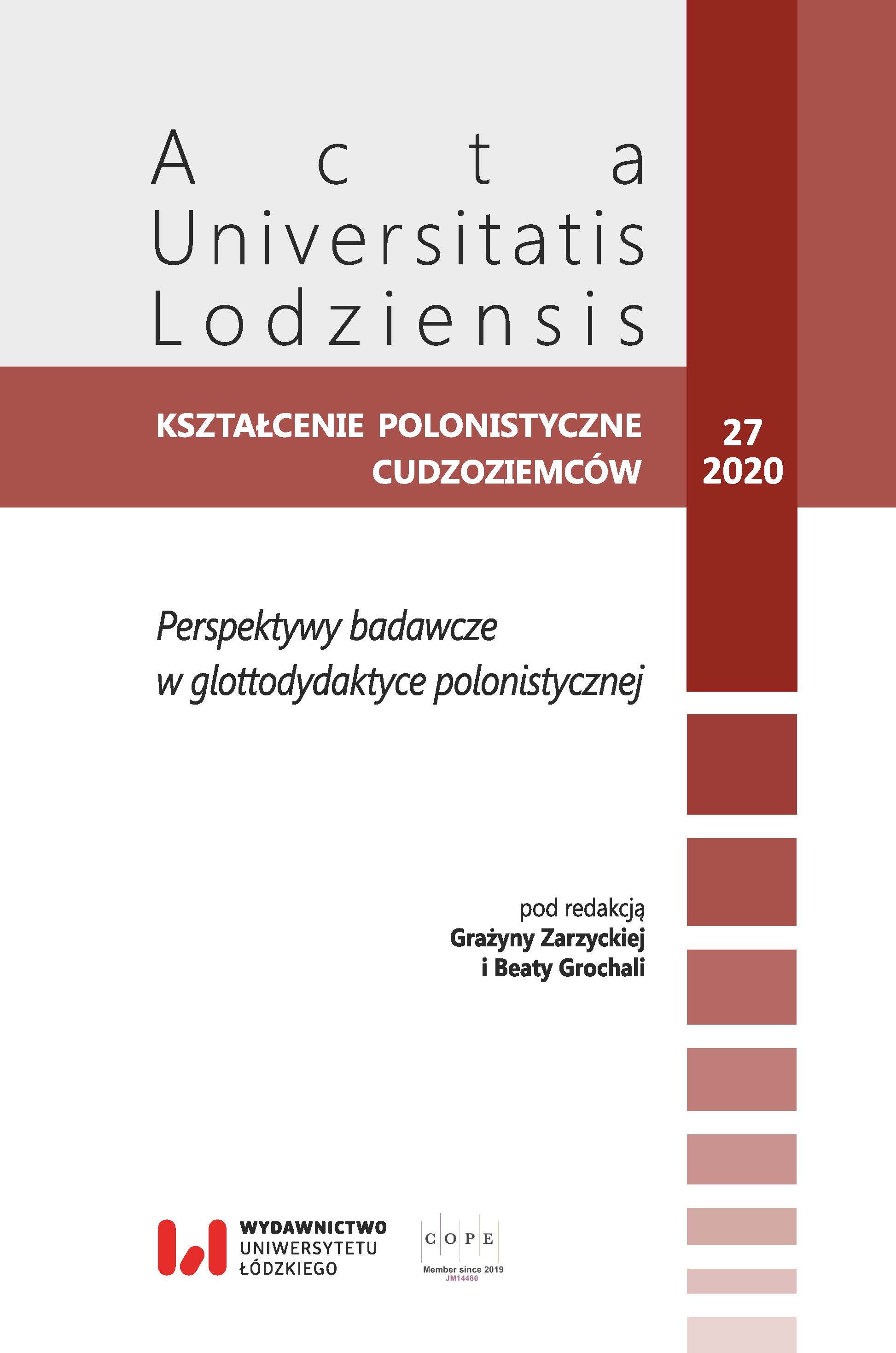Termin „transidiomatyczność” jako próba znalezienia adekwatnego lingwistycznego ujęcia dla niektórych wątków glottodydaktycznych
DOI:
https://doi.org/10.18778/0860-6587.27.04Słowa kluczowe:
homonimia międzyjęzykowa, interkomprehensja, glottodydaktyka, języki słowiańskieAbstrakt
Treścią artykułu jest propozycja terminologiczna mająca na celu uzupełnienie systemu pojęć charakteryzujących interakcję systemów językowych w różnych sytuacjach komunikowania się ich użytkowników, w tym w sytuacji przyswajania jednego z tych systemów (glottodydaktyka). Proponowany przez autora termin „transidiomatyczność” ma oznaczać właściwość elementu systemu językowego, która potencjalnie objawia się w komunikacji jako niekontrolowane przełączenie kodu językowego na skutek podobieństwa tego elementu do analogicznego elementu innego systemu językowego. „Transidiomatyczność” jest pojęciem nadrzędnym w stosunku do takiego pojęcia jak np. „homonimia międzyjęzykowa”, ponieważ po pierwsze zakłada nie tylko przełączenie kodu zakłócające komunikację (interferencja językowa), lecz także możliwość skutecznego wspierania komunikacji środkami zaczerpniętymi z innego systemu (pozytywny transfer językowy, interkomprehensja), a po drugie może być stosowane nie tylko do jednostek systemu leksykalnego, lecz do każdego innego poziomu systemu językowego (przy zastosowaniu odpowiedniego uściślenia nominacyjnego).
Bibliografia
Aleksandrova Z., 2010, Słowar’ sinonimow russkogo jazyka. Prakticzeskij sprawocznik, Moskwa.
Google Scholar
Gębal P.E., 2016, Interkomprehensja, strategie mediacyjne i nauczanie języków obcych, w: E. Lipińska, A. Seretny (red.), Tłumaczenie dydaktyczne w nowoczesnym kształceniu językowym, Kraków, s. 77–93.
Google Scholar
Hemming E., Klein H.G., Reissner Ch., 2011, English – the Bridge to the Romance Languages, Aachen.
Google Scholar
http://www.kongrespolonistow2016.us.edu.pl/panel_8.php [08.06.2020].
Google Scholar
Ignatyeva N., 2016, Frazeologiczeskaja meżjazykowaja omonimija kak istocznik interferencii, „Wiestnik Rossijskogo uniwersiteta drużby narodow. Russkij i inostrannyje jazyki i metodika ich priepodawanija”, nr 2, s. 22–27.
Google Scholar
DOI: https://doi.org/10.1007/s15016-016-5446-2
Jamet M.-Ch. (ed.), 2009, Orale e intercomprensione tra lingue romanze, Venezia.
Google Scholar
Kaleta R., 2014, Białorusko-polska homonimia międzyjęzykowa, Warszawa.
Google Scholar
Kusal’ K., 2002, Rosyjsko-polski słownik homonimów międzyjęzykowych, Wrocław.
Google Scholar
Kusal’ K., 2006, Russko-pol’skaja mieżjazykowaja omonimija kak leksikograficzeskaja problema, Sankt-Petersburg.
Google Scholar
Majewska M.B. (red.), 2017a, Wokół homonimii międzyjęzykowej, Warszawa
Google Scholar
Majewska M.B., 2017b, Homonimia międzyjęzykowa – ustalenia terminologiczne, słowiański dorobek leksykograficzny, w: M.B. Majewska (red.), Wokół homonimii międzyjęzykowej, Warszawa, s. 193–216.
Google Scholar
Pančiková M., 2005, Zradnosti pol’skej a slovenskej lexiky, Opole.
Google Scholar
Szapkina O., 1997, Podstawowe trudności w nauczaniu języka polskiego początkujących studentów rosyjskojęzycznych, w: W.T. Miodunka (red.), Nauczanie języka polskiego jako obcego. Materiały z I Konferencji Grupy „Bristol”, Kraków.
Google Scholar
Tezaurus terminologii translatorycznej, 1998, red. J. Lukszyn, Warszawa.
Google Scholar
Pobrania
Opublikowane
Jak cytować
Numer
Dział
Licencja

Utwór dostępny jest na licencji Creative Commons Uznanie autorstwa – Użycie niekomercyjne – Bez utworów zależnych 4.0 Międzynarodowe.










